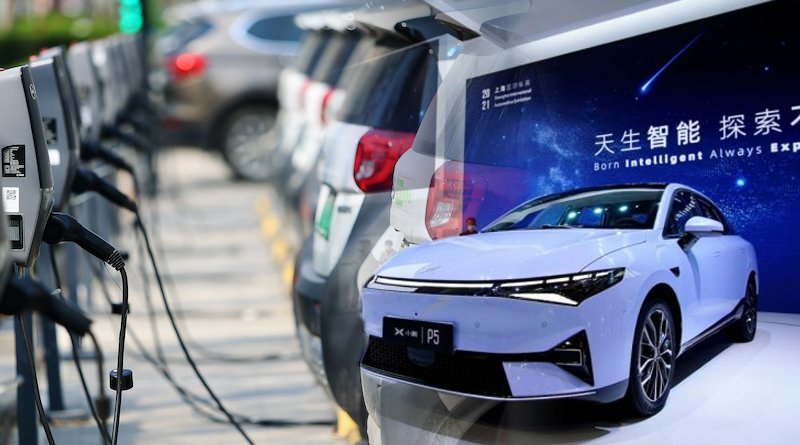In order to allay consumer worries about price increases, Tesla announced a price reduction in the fourth quarter of 2022, followed by a temporary insurance subsidy.

The government’s subsidies for new-energy vehicles (NEVs) have ended as planned, so China’s NEV market has ushered in a new stage marked by competition. It’s time for market participants to increase their core competitiveness by lowering costs and introducing cutting-edge products that cater to Chinese consumers’ needs.
BYD (Build Your Dreams), the top NEV manufacturer in China, announced that it will start adjusting its selling prices on Sunday. The company announced on Saturday that the official guidance prices of some BYD models will increase by anywhere from 2,000 yuan ($290) to 6,000 yuan per vehicle.
The price adjustment was actually announced by the Shenzhen-based automaker at the end of November, with the government subsidy policy’s expiration and rising costs for battery-making materials as justifications.
Separately, Guangzhou Automobile Group‘s NEV brand Aion announced in December that it would increase the selling price of its models by 3,000 yuan to 8,000 yuan as a result of the removal of subsidies and rising material costs.
Other manufacturers opt to bear the costs associated with the phase-out of government subsidies, in contrast to the pricing strategies used by the two NEV makers.
“The removal of incentives will put additional cost pressure on automakers. So it is natural for the NEV makers to raise prices. However, in light of Tesla’s recent price cuts, most NEV companies may maintain price stability and refrain from making drastic price changes,” Cui Dongshu, secretary general of the China Passenger Car Association (CPCA), told reporters on Monday.
In order to allay consumer worries about price increases, Tesla announced a price reduction in the fourth quarter of 2022, followed by a temporary insurance subsidy.
The business started new promotional initiatives over the three-day New Year’s holiday. A Tesla salesperson in Beijing told on Monday that customers could receive insurance subsidies of 4,000 yuan and cash subsidies of 6,000 yuan if they placed their orders by the end of February.
The salesperson said, “Now that the cost of the supply chain is still high and government subsidies have been cut back, we’ve decided to absorb the costs on our own. In 2023, the cost of lithium carbonate, a vital part of NEV batteries, is anticipated to decline, providing some relief for NEV manufacturers.
Chinese lithium carbonate is expected to cost $67,500 per tonne in the first half of 2023 before dropping to $47,500 per tonne in the second half, according to Morgan Stanley.
At the end of 2022, China began to phase out the NEV purchase incentive. Pure-electric and plug-in hybrid vehicles were each eligible for subsidies of 12,600 yuan and 4,800 yuan per unit in 2022, which was a relatively smaller amount than it was in 2018. Pure electric, plug-in hybrid, and hydrogen fuel cell vehicles are among China’s NEVs.
The subsidy programme was first introduced in 2009 to encourage the rapid growth of China’s fledgling NEV industry. Although the government extended the deadline in March 2020, it had originally announced plans to end subsidies by the end of 2020.
After the government subsidies run out, the China NEV market will enter a new phase marked by increased market competition. According to analysts, only those players who can supply the products that the market needs will survive and prosper.
Subsidies, however, have already diminished in importance for the nation’s major NEV producers in recent years as the market has become more dominant in the NEV sector.
78 percent of NEVs received government subsidies in 2017, but only 47 percent did so in 2021, according to data from the Ministry of Industry and Information Technology.
“The phase-out of subsidies will have a significant impact on those automakers that make cars for subsidies’ sake, as well as on those models that are primarily low end, priced around 100,000 yuan,” according to Cui.
“China’s NEV market has become much more mature compared with a decade ago, with NEV models more acceptable among Chinese consumers,” he added.
From January to November of 2022, the country’s NEV sales exceeded 6.06 million units, doubling from the previous year. And the market share of NEVs has hit 25 percent, according to the China Association of Automobile Manufacturers (CAAM).
Analysts projected there will be slower EV sales in the coming months after the subsidy policy phase-out, but its sales growth will still remain positive in the country in 2023.
According to the CAAM, China’s NEV sales for 2023 are expected to increase by 35 percent over the next 12 months to 9 million units, up from an estimated 6.7 million units for 2022.
According to Zhang Xiang, a visiting professor at Huanghe Science and Technology University’s Engineering Department, the phase-out of the subsidy policy will cause a slight decline in NEV sales growth in 2023. But the interest in NEVs in the Chinese market will continue.
With the highest share among all major economies in the world, he predicted that NEVs will likely make up 30% of all vehicle sales in the nation in 2023.
A Great Wall Securities analysis predicts that NEV market competition will increase in 2023, especially between automakers and dealers.